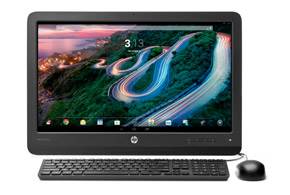The layoffs, which will come over two years, are part of a larger restructuring effort at the company as it tries to weather the slumping PC space.
HP Inc. will cut another 3,000 to 4,000 jobs over the next two years as it navigates a global PC market that continues to shrink.
In a filing with the Securities and Exchange Commission (SEC) Oct. 13, company officials said the job cuts will occur between HP’s fiscal years 2017 and 2019 as part of a larger restructuring plan that they said will save the company $200 million to $300 million beginning its fiscal year 2020. The layoffs and other restructuring efforts will cost HP between $350 million and $500 million in charges.
The SEC filing came the same day HP executives issued a cautious outlook for fiscal year 2017, including expected earnings of $1.55 to $1.65 per share.
In a statement, HP President and CEO Don Weisler said that he was “proud of the progress we have made in our first year as the new HP. Our focus is clear, our execution is solid, and we are positioned well for the next step in our journey.”
Weisler said he is confident in the strategy the company has laid out, saying it will result in solid cash flow and good returns, but added that “our markets remain very challenged.” HP officials will continue to focus on such areas as commercial mobile systems and services, the A3 copier space and the 3D printing market.
The announcement of the upcoming job cuts comes almost a year after HP Inc. was created by the breakup of Hewlett-Packard. From the split came HP Inc., which sells PCs and printers, and Hewlett Packard Enterprise (HPE), which focuses on enterprise IT infrastructure, including servers, storage systems, networking gear and services.
It also comes on top of the announcement in February that the newly created PC maker was accelerating the restructuring efforts following the company’s difficult first fiscal quarter, a move that meant slashing 3,000 jobs in 2016. The layoffs would save the company about $300 million a year starting in fiscal year 2017, officials said.
The backdrop for much of this is the continued contraction in the worldwide PC market, which has seen the number of systems shipped decline since late 2011. The rise of mobile devices like smartphones, tablets and phablets has taken a chunk of consumer and business user technology cash that would have gone to PCs. In addition, users are holding onto their PCs for longer periods of time, some as long as five years or more.
PC vendors also have been criticized in the past for failing to create form factors that would entice consumers and business users to buy new systems, though that is changing with the growth of such systems as two-in-ones and convertibles—both of which can be used as either a traditional PC or tablet—and new all-in-one PC designs.
PC sales also have been hurt by a relatively low consumer demand in emerging markets, where many users are bypassing PCs altogether and using their smartphones or tablets as their primary computing devices.
According to analysts with Gartner and IDC, the market slowdown continued in the third quarter, with PC shipments falling by 3.9 percent to 5.7 percent, though IDC analysts were cautiously optimistic that the market may be stabilizing.
“There are two fundamental issues that have impacted PC market results: the extension of the lifetime of the PC caused by the excess of consumer devices, and weak PC consumer demand in emerging markets,” Mikako Kitagawa, principal analyst at Gartner, said in a statement. “According to our 2016 personal technology survey, the majority of consumers own, and use, at least three different types of devices in mature markets. Among these devices, the PC is not a high priority device for the majority of consumers, so they do not feel the need to upgrade their PCs as often as they used to. Some may never decide to upgrade to a PC again.”
However, the market is continuing to consolidate around the top three vendors—Lenovo, HP and Dell—and HP has significantly closed the gap with Lenovo, which overtook HP in 2013 to become the world’s largest vendor. While PC shipments for Lenovo in the third quarter continued to decline, both HP and Dell saw gains, the analysts said.







